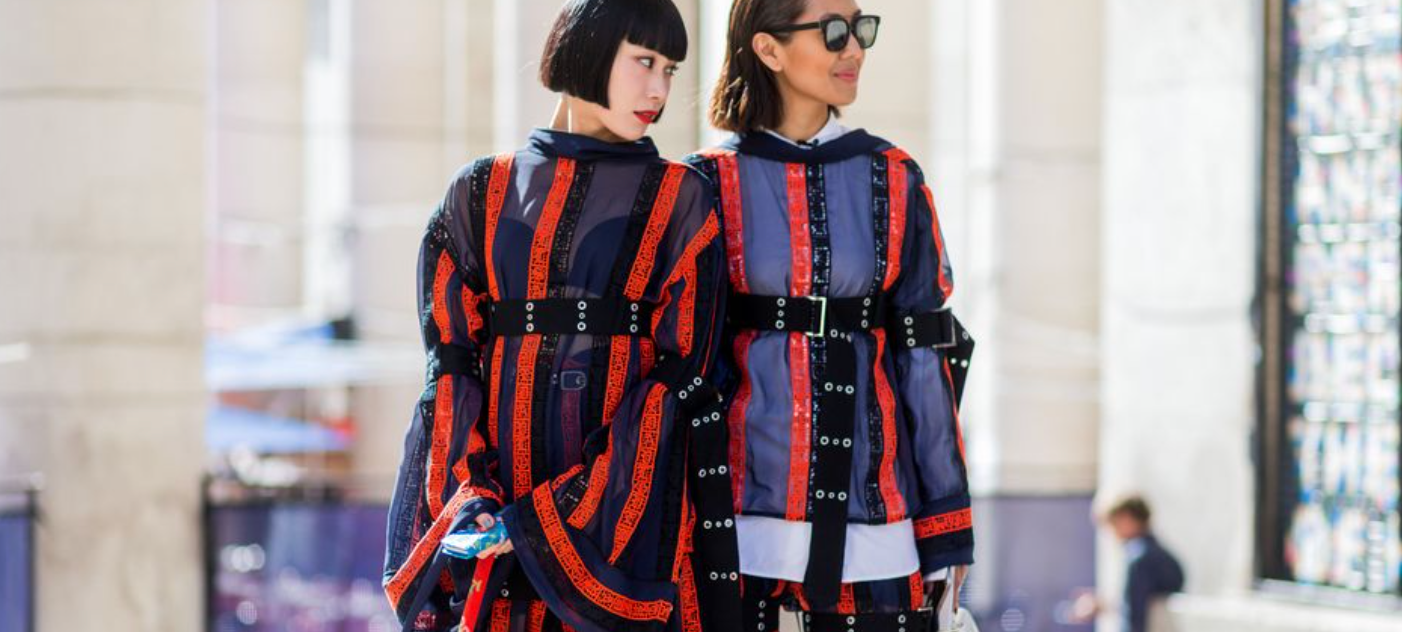What is Minimalist and Maximalist Fashion?
Maximalism and minimalism are polar opposites of each other. Although they are both fully fledged lifestyles and mindsets, they have both taken over the fashion world and people use them to express their style. Minimalism follows the saying ‘less is more.’ It’s about being as simple as possible and focusing on quality over quantity. Minimalists reject excess and overt consumerism and only buy what they need. In contrast, maximalism believes in the saying ‘the more the merrier.’ They want both quantity and quality in their fashion. Maximalists typically go for unique, colorful or heavily patterned garments over neutral solid colored garments for more busy looks. They are all for excess and consumerism. These two lifestyles can be reflected not only through fashion but through interior design and art.
Courtesy of Elle
Today, maximalist fashion is more in trend than minimalist fashion. For instance, earlier this year, the “weird girl aesthetic” emerged which was a maximalist trend from TikTok that involved busy and colorful garments altogether in one outfit. Celebrities such as Bella Hadid wore this trend and cemented both it and maximalism into the fashion world. In general, over consumerism is popular today. People are always buying more clothes in excess. More recently, consumers tend to buy more colorful and patterned pieces. This movement allows people to buy more pieces that are unique to them and are personal. Think of lots of accessories, color, patterns, silhouettes and/or textures in one outfit. Even though they have a lot of color, maximalist fashion still values balance. For instance, if someone is wearing a statement necklace, they pair it with a simpler shirt. In addition, contrasting colors and patterns work so outfits are not as cluttered. Maximalism works by layering or mixing and matching several pieces altogether in one outfit.
Courtesy of Elle
Minimalism is well known but it is not as popular as maximalism, but it has been around long before maximalism. Minimalism was made as a response to the abstract expressionist movement in the 1950s. It was made to strip the extra colors and details of art to get to the heart of the artist's emotions. Now, people use minimalism as a way to free themselves from the current over consumerism that is so popular and pushed at the forefront. They purchase only the essentials and focus on other aspects in their lives to be more happy and fulfilled. They believe that getting rid of the clutter and overconsumption of closets can get rid of the clutter in the mind.
Courtesy of Vogue
Minimalism can also be a way for consumers to be more environmentally conscious by buying less material goods and wasting less. To achieve a minimalist wardrobe, it is about getting rid of things that people do not need. It is about finding a person's personal style with fewer options. Think of simple solid garments that are made to last and that are always trendy such as black blazers or trousers. Head to toe monochromatic looks are a way to achieve minimalist style without looking too boring. There are many minimalist fashion brands that follow this lifestyle and are sustainable such as Armedangels and Kotn.
Courtesy of Style Caster
Minimalism may not be as popular as maximalism today because it may not feel as personal to consumers. A colorful or patterned shirt will be more likely to stick out over a neutral colored one. The lifestyle may also feel limiting and depriving of a person's creativity because people have a smaller quantity of clothing. Maximalist and minimalist fashion are polar opposites that can match anybody's lifestyle. Both allow people to get creative with their wardrobes in different ways with their different approaches. Overall, these two lifestyles impact the fashion industry heavily with versatile styling and garments for anyone to wear.





